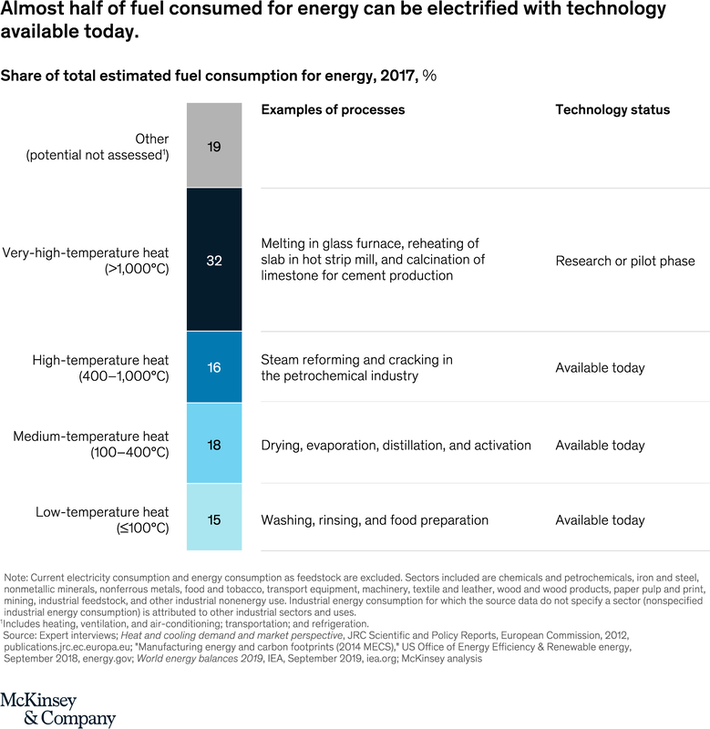7 Steps to Going ElectricYou may be on this page for quick links to financing options, but before you dive in ... it's essential you make a plan to electrify!
Think of your building and operations as an ecosystem. Before electrifying, it’s important to understand all the components and how they interact. Sequencing building and appliance upgrades is crucial, saving you money and headaches. Whether you own a commercial building or a muti-residential complex, or you’re a small business that rents, there are steps you can take to electrify. Start by identifying your main goals and how they interact. This will help guide your decision-making process. Ask yourself (or your team or board):
Step 1: Understand your energy use
The first step is to look holistically at your business’s processes, equipment and infrastructure to understand how each element is powered. (New construction? Skip to Step 2.) Think about:
Step 2: work with a trusted contractor or consultant
Now that you have a better understanding of your overall energy use, it’s a great time to reach out to a trusted contractor or consultant (who actively supports clean energy projects). When choosing a contractor, consider the number of completed clean energy projects and any technical requirements or certifications that reflect their commitment to quality control when installing high-efficiency electric systems. (And we’ll be honest, we are lacking energy auditors and preferred contractor lists, so this can take some sleuthing – we have separate efforts aimed at growing a diverse workforce that can adequately Electrify Missoula!). Think about this step as the start of a longer relationship, where you can make a plan together of when and how to transition away from fossil-fuels. A quality contractor or consultant will help put together a plan of when and how to replace appliances to ensure overall success; they’ll also help you put together a budget.
Step 3: Consider these factors
Weatherization & Improving Efficiency - It's wise to think about making your business space as energy efficient as possible before installing an electric system. This step will help you save energy right away with current appliances and a well-insulated, weatherized building will result in lower energy demand overall, allowing you to potentially buy a smaller, less expensive system. Initial vs. Operational Cost - High efficiency electric systems will typically have a higher initial cost than conventional fossil-fuel based heating/cooling systems, but the increased efficiency means lower operating costs over time. It's also worth noting that the costs to retrofit a heat pump to an existing building may not reflect the additional wiring needed at the indoor and outdoor location. Consider payback times and existing energy infrastructure when choosing a system. Efficiency Rating - Make sure your system has an adequate SEER/HSPF rating and / or is on the qualified list of products to receive tax incentives. Step 4: create a working plan
Obviously, there is no "one-size fits all" solution. The system(s) you end up going with is highly dependent on your budget, comfort requirements, heating and cooling demand, health impacts, specific micro-climate, convenience, aesthetic preferences, and environmental impact. The best thing to do is to understand your priorities (cost? health? air quality? environment?) and make a quick tradeoff list before you decide how you’d like to proceed. The sooner you assess the potential to electrify, the more likely it is you’ll choose the most practical moment to invest in the transition. Plus, if any methane-powered appliances go out unexpectedly, you’ll have already done your research on an energy-efficient model to replace it. Step 5: figure out financing & a budget
Start actively building your plan into your upcoming budgets. The great news is, between rebates, tax credits and financial incentives, there are several ways to offset the initial cost of going electric. (More business-specific details are coming soon on our financing page.) Step 6: Regular Maintenance & Weatherization
Get the most of your new systems. Follow all regular maintenance and continue to reevaluate opportunities to weatherize and boost efficiency. Step 7: Celebrate!
We know this can be a complicated process – so it’s important to celebrate along the way! You’re taking major steps that matter for our health and planet. Go you! Chances are high that your customers and employees will be just as proud of your efforts; make a plan to share your progress (and corresponding goals) with them along the way.
Industry: From Cooking to Steam Reforming ...
|
(Are you a business that's going electric? We'd love to hear about it. Contact us.)
|
Give Back: Invest in Community Offset Projects
The Footprint Fund is a community carbon offset program run by Climate Smart Missoula. This program allows you - as a business - to "offset" your carbon footprint by supporting local projects that benefit our neighbors and community. In turn, it also allows developers, builders, and nonprofits to use these Footprint Funds to add energy-saving measures or renewable energy to housing or other buildings when money for such is not available.
Financially supporting energy savings for others is just one way we can take action to reduce climate impacts in Missoula.
Click the button below to be directed to our Footprint Fund partner site.
Financially supporting energy savings for others is just one way we can take action to reduce climate impacts in Missoula.
Click the button below to be directed to our Footprint Fund partner site.





